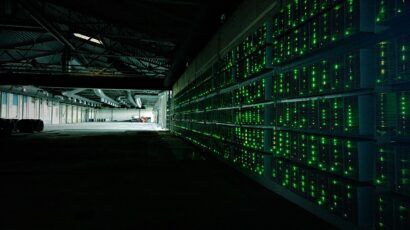Nuclear remains a slow, expensive option
By Amory B. Lovins, June 25, 2007
I asked Stephen Berry what he thinks energy efficiency and low- or no-carbon energy sources can
do, how fast, and at what cost–giving him concrete examples of their successful implementation.
His reply is simply: “Amory is always delightfully optimistic about the rates of diffusion and
acceptance of new technologies.” That hardly seems responsive. I wasn’t referring to new
technologies but to well-understood, widely available efficiency and distributed-generation
techniques that have become much cheaper in the past decade. As usual, I was using empirical
data.
My
2006
Royal Academy of Engineering lecture (PDF, 3.7MB) mentioned that from 1982 to 1985, when
California let all options compete fairly, its utilities bought or were firmly offered 23 GW of
savings; 13 GW of new capacity (mostly renewable) bought plus 8 GW more on firm offer
; and further such supplies increasing by another 9 GW
per year. Since the 1984 peak load was only 37 GW, this four-year experiment yielded low-
or no-carbon alternatives totaling 143 percent of total peak demand. Twenty years later, these
alternatives are even bigger, cheaper, and faster to deploy via their far more mature market
structure.
Second, my
white
paper on energy efficiency for the InterAcademy Council (PDF, 344KB) (a consortium of 90
national academies of science) notes: “In 1983-1985, 10 million people served by Southern
California Edison Company were cutting its decade-ahead forecast of peak load by 8 1/2 percent per
year, at around 1 percent the long-run marginal cost of supply. In 1990, New England Electric
System signed up 90 percent of a pilot market for small-business retrofits in two months. In the
same year, Pacific Gas and Electric Company (PG&E) marketers captured one-fourth of the new
commercial construction market for design improvements in three months, so in 1991, PG&E raised
the target–and got it all in the first nine days of January.” And although 48 of the country’s 50
states reward utilities for selling more electricity and penalize them for cutting customers’
bills, in 2006, the United States cut electric intensity 3 percent and primary energy intensity 4
percent.
“Mighty
Mice,” (PDF, 680KB) my
Nuclear Engineering International cost comparison of nuclear
versus efficiency and micropower, and its
backup paper
(PDF, 476KB) summarize extensive empirical data showing that saving electricity costs an order
of magnitude less than producing and delivering it from new nuclear plants and that “micropower” is
also walloping nuclear in the global marketplace. The 2005 data (the latest available) posted at
www.rmi.org in publication E05-04 showa
remarkable contrast: micropower–cogeneration plus renewables minus big hydro–added four times as
much electrical output and eleven times as much capacity in 2005 as nuclear power did, while
“negawatts” were of comparable size. Germany, Spain, and India
each add about 2 GW of wind power per year (as will China within a year or so)–about as
much net capacity as the
world adds in nuclear power each year.
Thus, Berry thinks we must divert far more investment into new nuclear plants, which added only
4 percent of the world’s new 2005 capacity, even though they’d cost 2-10 times as much per
delivered kilowatt-hour as the winning competitors that added more than 50 percent. He apparently
thinks this small, costly increment is vital because we need everything. Sorry, but I don’t see
why. Pursuing an expensive, slow option instead of a big portfolio of cheap, fast options will make
climate change worse, not better. And though I agree with his call for pricing carbon, doing so
will equally advantage efficiency and renewables and partially advantage cogeneration, so carbon
pricing won’t relieve nuclear power’s profound uncompetitiveness.
Developing countries see the same economic imperatives. Energy efficiency is China’s top
national development priority because without it, China can’t develop. (China already spends three
times the fraction of gross domestic product on electricity that the United States spends.) In the
quarter-century through 2001, China cut its energy intensity faster than any other country. India
is the world’s fourth largest wind power installer; China ranks just behind. By 2010, India is
predicted to have 11-12 GW of wind power (up from 6.3 GW at the end of 2006); China will have far
more than 5 GW (versus 2.6 GW in 2006).
I predict that the emerging successes of efficiency, wind, small hydro, other renewables, and
cogeneration will lead China to stop building those big, but uneconomic, coal plants just as it
recently abandoned coal-to-liquids. Because building more central stations requires about 10,000
times more capital than saving electricity, it reduces prosperity in all countries. The United
States can’t afford such squandering of capital; China and India , even less.
Share: [addthis tool="addthis_inline_share_toolbox"]














